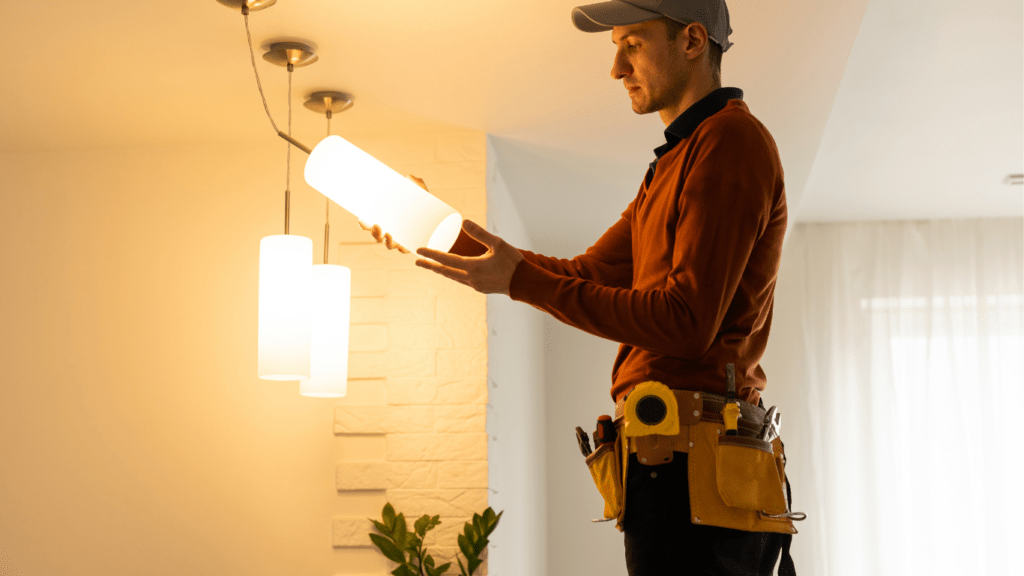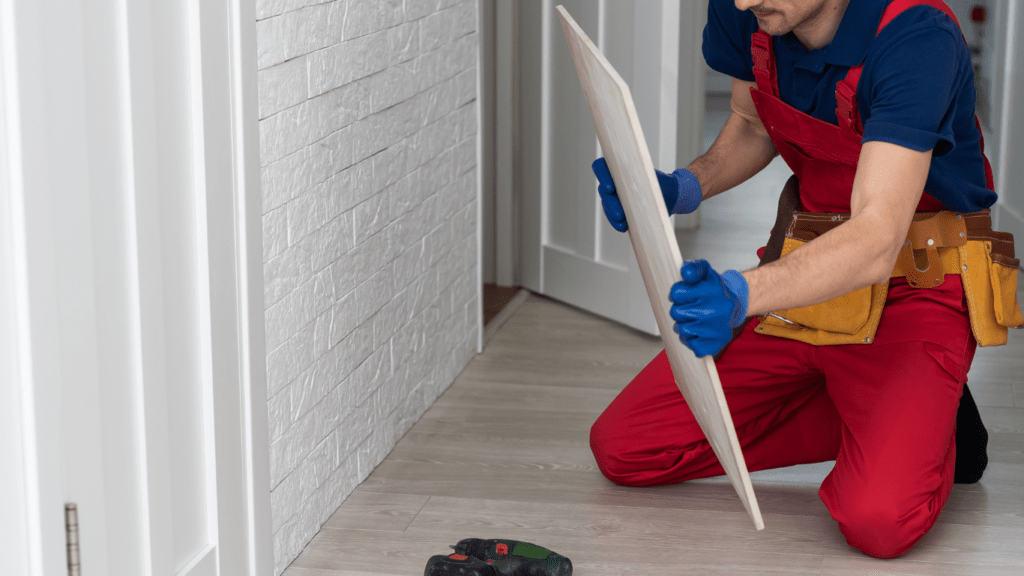Assessing Your Current Energy Efficiency
Understanding how your home uses energy is the first step in making it more efficient. Begin by evaluating your current energy consumption.
Conducting an Energy Audit
An energy audit provides a comprehensive analysis of your home’s energy usage. Professionals use specialized tools to detect leaks and inefficiencies. Start by hiring a certified energy auditor who can provide detailed insights and recommendations. Alternatively, perform a basic audit yourself by checking for drafts, inspecting insulation, and reviewing utility bills for spikes.
Identifying Key Areas for Improvement
Focus on areas that offer the most significant potential savings. Insulation, windows, and heating systems are common culprits of energy loss. Check for ineffective insulation in walls, attics, and basements. Assess the condition of windows for draftiness and leaks. Evaluate your heating and cooling units for efficiency and consider upgrades if they’re dated. Each improvement can significantly reduce energy consumption and maximize savings.
Insulation and Sealing
Proper insulation and sealing are crucial for improving your home’s energy efficiency. They prevent heat loss and reduce energy costs, contributing to a more sustainable living environment.
Upgrading Attic and Wall Insulation
Attic and wall insulation upgrades can significantly reduce energy consumption. In many homes, the attic lacks sufficient insulation, allowing heat to escape during winter and enter during summer. I recommend using materials like:
- fiberglass
- cellulose
- foam
for better insulation. For instance, fiberglass batts are common due to their cost-effectiveness and ease of installation.
Wall insulation is equally important. Homes with uninsulated walls lose considerable energy. Filling wall cavities with spray foam or blown-in cellulose increases thermal resistance. These materials expand to fill gaps, ensuring comprehensive coverage. Aim to meet or exceed your area’s R-value requirements for optimal efficiency.
Sealing Windows and Doors
Windows and doors are primary sources of drafts and energy loss. Sealing gaps around frames reduces air infiltration. I suggest using weatherstripping around door perimeters and caulking around windows. For example, adhesive-backed foam tape works well for sealing large gaps in doors.
Consider upgrading to energy-efficient windows, like double-pane or triple-pane ones, which provide better insulation. Installing storm doors adds another layer of protection against temperature fluctuations. Energy-efficient windows and doors significantly enhance insulation, ensuring a more comfortable indoor environment.
By focusing on insulation and sealing, homeowners can make impactful improvements to their home’s energy efficiency.
Energy-Efficient Windows
Energy-efficient windows play a critical role in enhancing your home’s energy performance. They help regulate indoor temperatures, reducing heating and cooling costs.
Choosing the Right Window Type
Multiple factors drive the choice of window type for your home. Consider the frame material, glass type, and gas fills between panes. Vinyl and fiberglass frames offer better insulation than aluminum frames. Select Low-E (low-emissivity) glass to reflect heat and reduce UV rays. Additionally, argon or krypton gas fills between panes improve insulation.
Benefits of Double-Glazed Windows
Double-glazed windows feature two glass panes separated by a space filled with insulating gas. They improve thermal performance by reducing heat loss and gain. These windows also minimize outside noise, offering a quieter indoor environment. Double glazing can help lower utility bills by maintaining a consistent indoor temperature, reducing the need for heating and cooling systems.
HVAC System Upgrades
Upgrading your HVAC system can drastically improve your home’s energy efficiency. Investing in energy-efficient heating and cooling solutions helps reduce utility bills and lowers your carbon footprint.
Energy-Efficient Heating Options
Choosing the right heating system is crucial for optimizing energy use. Modern options like heat pumps, radiant floor heating, and programmable thermostats offer efficient alternatives to conventional heating methods.
- Heat Pumps: These devices transfer heat from the outside air or ground into your home. They can be up to 300% more efficient than traditional furnaces (source: Energy.gov).
- Radiant Floor Heating: This system circulates warm water through tubing under the floor, providing uniform heat distribution and improved comfort without wasting energy.
- Programmable Thermostats: These allow you to set specific temperatures for different times of the day, ensuring the heating system is not working overtime when it’s not needed.
Optimizing Cooling Systems
Improving the energy efficiency of cooling systems involves upgrading to more efficient models and optimizing usage to avoid unnecessary energy consumption.
- High-Efficiency Air Conditioners: Look for units with a high Seasonal Energy Efficiency Ratio (SEER) rating, typically over 15. These units use less electricity to cool the same amount of space (source: EnergyStar.gov).
- Ceiling Fans: An affordable way to improve air circulation, reducing the burden on your air conditioning system. Use them in conjunction with AC to increase comfort at higher thermostat settings.
- Smart Thermostats: These devices learn your cooling preferences and adjust automatically for optimal performance. Some models also offer remote control via smartphone apps, allowing for greater control over energy usage.
Investing in these HVAC system upgrades enhances your home’s energy efficiency, reduces utility costs, and minimizes its environmental impact.
Lighting Improvements

Incorporating energy-efficient lighting can significantly enhance your home’s energy performance. Modern lighting solutions offer various options to reduce energy consumption while maintaining optimal brightness.
Switching to LED Bulbs
LED bulbs provide a simple yet effective way to reduce energy consumption. These light-emitting diode bulbs use up to 75% less energy than traditional incandescent bulbs. They also last significantly longer: an LED bulb typically has a lifespan of 25,000 hours compared to 1,000 hours for incandescent bulbs. For example, installing LED bulbs in high-traffic areas like the kitchen and living room can lead to substantial energy savings.
Implementing Smart Lighting Solutions
Smart lighting solutions offer advanced control over your home’s lighting, enhancing both efficiency and convenience. Smart bulbs, like those from Philips Hue or LIFX, can be controlled via smartphone apps or voice assistants, allowing you to adjust brightness and color temperature remotely. Motion sensors can automate lighting based on room occupancy, reducing energy usage in unoccupied spaces. Dimming functionalities also enable further energy savings by adjusting light intensity to suit activities.
By integrating LED bulbs and smart lighting solutions, you can cut energy costs and create a more energy-efficient home environment.
Renewable Energy Options
Renewable energy options can significantly reduce a home’s reliance on traditional power sources. Here are some efficient methods to integrate renewable energy into your home renovation.
Solar Panel Installation
Solar panel installation offers a sustainable way to generate electricity. When installing solar panels, evaluate your roof’s orientation and shading to maximize sunlight exposure. South-facing roofs typically yield the best results. Solar panels can greatly reduce energy bills and may offer tax incentives. Companies like Tesla and SunPower provide top-rated solar solutions. In many cases, homeowners see a return on investment within 5-10 years.
Wind Energy Considerations
Small wind turbines can be another effective renewable energy solution. Before installing a wind turbine, consider your property’s wind speed and zoning regulations. Ideal locations for wind turbines have average wind speeds of at least 12 mph. Wind energy systems work best in rural or open areas where wind flow is unobstructed. Wind turbines from providers like Bergey Windpower and Primus Wind Power can significantly cut your energy costs.
Water Conservation Measures
Water conservation is a crucial aspect of making your home more energy-efficient. Implementing efficient strategies can reduce water usage and utility bills.
Low-Flow Fixtures
Low-flow fixtures help cut water usage without compromising performance. Install low-flow showerheads, faucets, and toilets to achieve substantial water savings. For example, replacing an older toilet with a WaterSense-labeled model can save up to 13,000 gallons of water annually, according to the EPA. Additionally, aerators on faucets are inexpensive and effective, reducing water flow while maintaining pressure.
Efficient Water Heating
Efficient water heating systems minimize energy waste. Tankless water heaters provide hot water on demand and eliminate standby heat loss associated with traditional storage tanks. Another option is a heat pump water heater, which can be two to three times more energy-efficient. To maximize efficiency, insulate your water heater and hot water pipes to retain heat. If you set the water heater thermostat to 120°F, you can reduce energy consumption without sacrificing comfort.



 Wesleyero McGill – Founder & CEO
Wesleyero McGill is the visionary behind Castle Shelf House, bringing over a decade of experience in home renovation and design. His passion for creating beautiful, functional spaces has led him to establish this platform, where he shares the latest trends in interior and exterior design. As Founder and CEO, Wesleyero is dedicated to offering expert advice on furniture placement, home styling, and renovation, helping homeowners transform their spaces with ease and confidence.
Wesleyero McGill – Founder & CEO
Wesleyero McGill is the visionary behind Castle Shelf House, bringing over a decade of experience in home renovation and design. His passion for creating beautiful, functional spaces has led him to establish this platform, where he shares the latest trends in interior and exterior design. As Founder and CEO, Wesleyero is dedicated to offering expert advice on furniture placement, home styling, and renovation, helping homeowners transform their spaces with ease and confidence.
